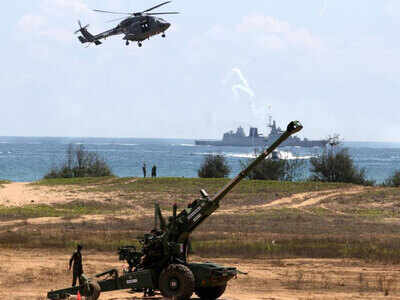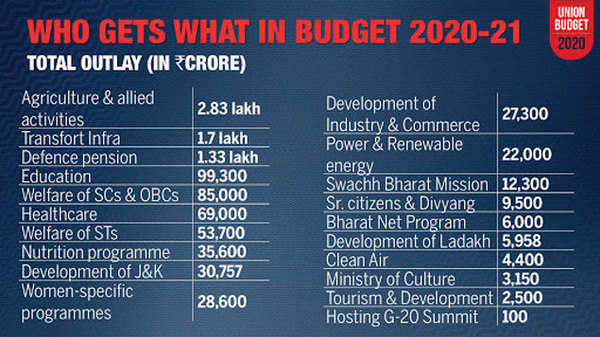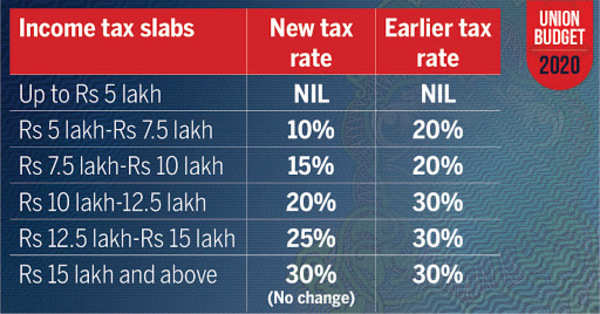- News
- India News
- No Big Bang modernization for the armed forces in the defence budget
Trending
This story is from February 1, 2020
No Big Bang modernization for the armed forces in the defence budget
With yet another paltry hike in the defence budget, the modernization of the 1.5-miilion strong armed forces will continue in its slow and haphazard manner, leaving critical operational deficiencies on several fronts from helicopters and howitzers to fighters and submarines. The defence outlay this year is Rs 3.37 lakh crore, which does not amount to even a 2% hike over the revised estimates of the last fiscal.

NEW DELHI: With yet another paltry hike in the defence budget, the modernization of the 1.5-miilion strong armed forces will continue in its slow and haphazard manner, leaving critical operational deficiencies on several fronts from helicopters and howitzers to fighters and submarines. The defence outlay this year is Rs 3.37 lakh crore, which does not amount to even a 2% hike over the revised estimates of the last fiscal.
Read also: Union Budget 2020 live updates
The Rs 3.37 lakh crore defence budget works out to just 1.5% of the projected GDP for 2020-2021, which is the lowest such figure since the 1962 war with China.Another Rs 1.33 lakh crore has been allocated separately for defence pensions of retired military and civilian personnel.

The defence ministry (MoD), incidentally, has proposed to the Finance Commission (FC) that a non-lapsable fund should be created for defence acquisitions, which require large capital outlays, because the nature of threats that the country faces “demands complete defence preparedness”.

The MoD also asked for a levy of special cess, monetization of surplus land and other assets, tax-free defence bonds and utilization of the proceeds of disinvestment of defence PSUs for requisite military modernization. The FC says it will constitute an expert group to examine the proposed non-lapsable fund or an alternative mechanism for arms acquisitions.
The ballooning salary and pension bills of the manpower-intensive armed forces is, of course, a major drag on the defence budget. The capital outlay for new weapon systems and overall defence modernization is just Rs 1,18,555 crore in the defence budget this year. It is dwarfed by the Rs 2,18,998 crore revenue expenditure for day-to-day running costs, salaries and the like. Moreover, the capital outlay is not even enough for “committed liabilities” or instalments for arms deals inked in earlier years.
One of the top priorities for the country’s first-ever chief of defence staff General Bipin Rawat will be to push for genuine integration among the Army, Navy and IAF, which often pull in different directions, to slash wasteful expenditure and non-operational flab. There is, of course, also no getting away from the fact that India needs to build a robust defence industrial base to reduce its strategically-vulnerable dependence on expensive arms imports.
Read also: Union Budget 2020 live updates
The Rs 3.37 lakh crore defence budget works out to just 1.5% of the projected GDP for 2020-2021, which is the lowest such figure since the 1962 war with China.Another Rs 1.33 lakh crore has been allocated separately for defence pensions of retired military and civilian personnel.

Even if the defence pensions are included in the defence budget, it amounts to just 2.1% of the GDP. This when military experts have been demanding that India should allocate at least 2.5% to defence expenditure for building requisite deterrence against China and Pakistan.
The defence ministry (MoD), incidentally, has proposed to the Finance Commission (FC) that a non-lapsable fund should be created for defence acquisitions, which require large capital outlays, because the nature of threats that the country faces “demands complete defence preparedness”.

The MoD also asked for a levy of special cess, monetization of surplus land and other assets, tax-free defence bonds and utilization of the proceeds of disinvestment of defence PSUs for requisite military modernization. The FC says it will constitute an expert group to examine the proposed non-lapsable fund or an alternative mechanism for arms acquisitions.
The ballooning salary and pension bills of the manpower-intensive armed forces is, of course, a major drag on the defence budget. The capital outlay for new weapon systems and overall defence modernization is just Rs 1,18,555 crore in the defence budget this year. It is dwarfed by the Rs 2,18,998 crore revenue expenditure for day-to-day running costs, salaries and the like. Moreover, the capital outlay is not even enough for “committed liabilities” or instalments for arms deals inked in earlier years.
One of the top priorities for the country’s first-ever chief of defence staff General Bipin Rawat will be to push for genuine integration among the Army, Navy and IAF, which often pull in different directions, to slash wasteful expenditure and non-operational flab. There is, of course, also no getting away from the fact that India needs to build a robust defence industrial base to reduce its strategically-vulnerable dependence on expensive arms imports.
End of Article
FOLLOW US ON SOCIAL MEDIA










